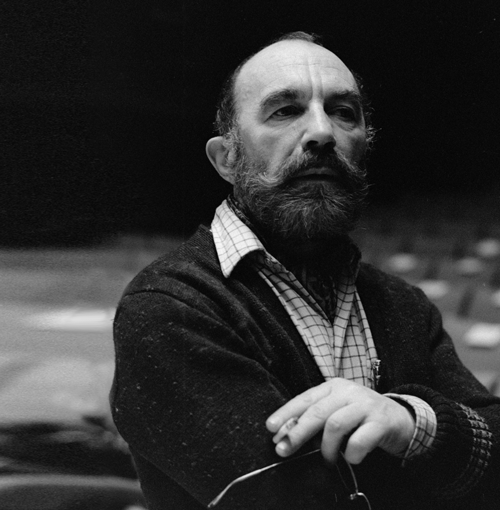Bernard Parmegiani

1980 @ Ina
Bernard Parmegiani (1927 – 2013).
Born in 1927, Bernard Parmegiani spent his youth “between two pianos”, his mother’s and his father’s: “I was actually in between two pianos: on one side of my room was my father’s office, where he was teaching piano to the great students of the conservatory,and on the other side was my mother’s office, where she was teaching elementary piano to children. She was my teacher for many years.”
In 1959, Bernard Parmegiani, who was then an audio engineer at the French National Television Company, met Pierre Schaeffer who hired him to do the same job at the GRM. He became the assistant of I. Xenakis, L. Ferrari and F. B. Mâche.
In 1962, he took part to the “Concert collectif” who reunited ten GRM composers. Devy Erlih, a violinist present in the audience, asked him to compose a piece for violin and tape that would eventually become Violostries in 1964. This would also become the starting pointof Bernard Parmegiani’s musical work, that now includes more than 80 opus and many pieces for films, television, dance, theatre, and sound design works.
L’œil écoute – The listening eye / 1970, 19’11
Premiered at the Gulnbekian Festival in Lisbon on May 9th, 1970(with a video directed by Valérian Borowzyck)
In chronological order: Train de passage (Passing Train), Passages d’insectes (Passing Insects), Transition, Harmoniques 1 (Harmonics N° 1), Signes (Signs), Harmoniques 2 (Harmonics N° 2), Murmurants (Murmurs); Alternatif (Alternative).
“Right on the outset, struck by the musical sonorities inside a train, the journey this piece is inviting you on is woven with different material and awakens our own imagination to comprehend the sounds, the power to guide those sounds into our inner labyrinths rather than follow them to Piura.This form of auditory contemplation tries to give us time to wander away from our usual, all too familiar territories. Maybe, from looking too hard, man has forgotten to listen.And the eye, having become the ‘solitary wanderer’ can only hear what disturbs it. This is what I meant when I created the piece in 1970.”
B. P.
